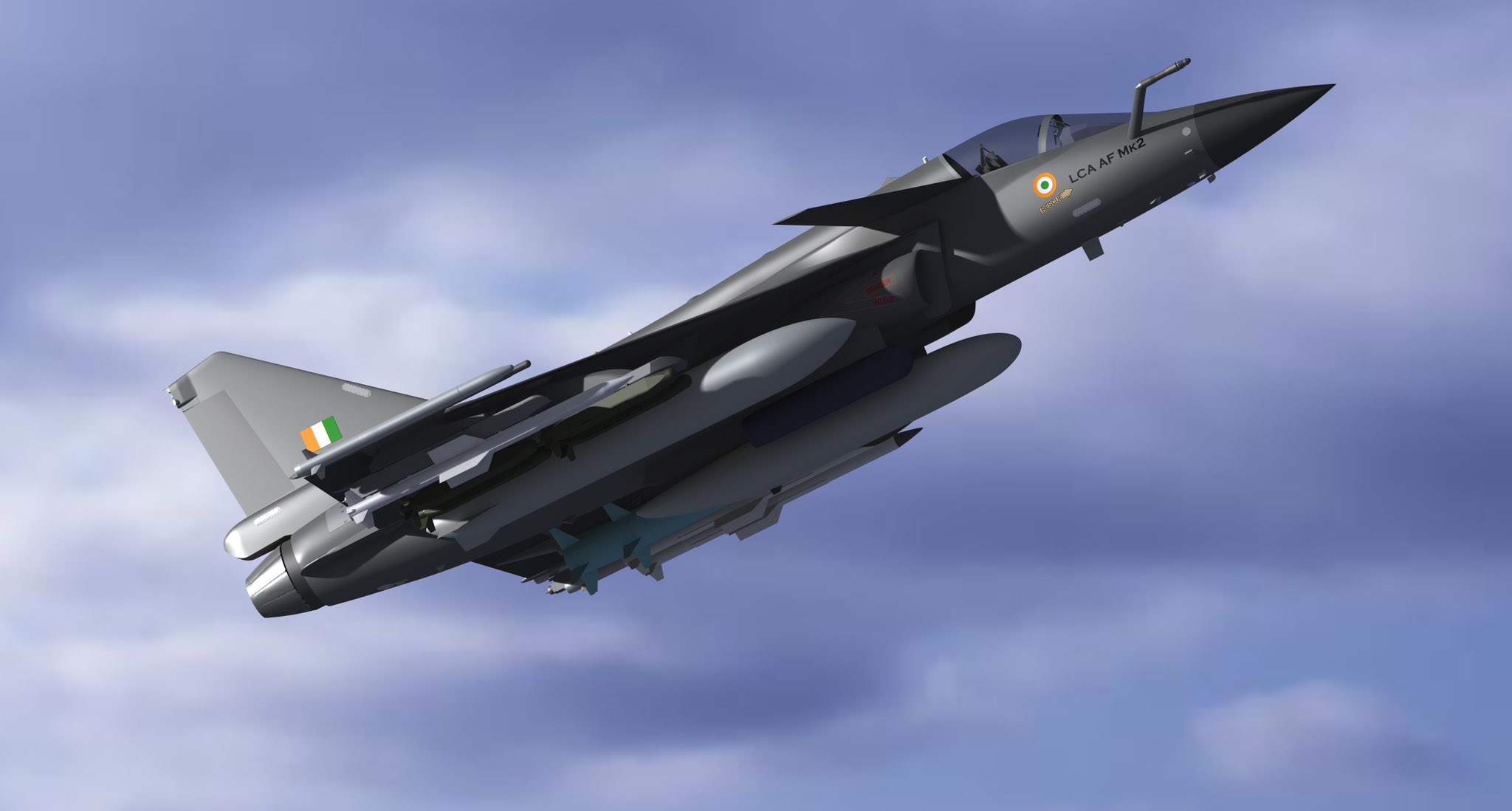In a major assertion of India’s aerospace ambitions, senior DRDO scientist Dr. Ravi Shankar S.R. has claimed that the HAL Tejas Mk-2 will match the capabilities of the French Rafale fighter jet—and may even surpass it in key areas. Speaking at a defence symposium in Bengaluru, he highlighted the Mk-2’s advanced avionics, indigenous weapon integration, and cost-effectiveness as factors that could position it as a game-changer for the Indian Air Force (IAF).
The Tejas Mk-2 is being developed as a multirole 4.5-generation fighter to replace ageing platforms like the Jaguar and Mirage 2000. An evolution of the Tejas Mk-1A, the Mk-2 features a larger airframe, increased payload capacity of 6,500 kg, and a combat range of 2,500 km with external fuel tanks. It is powered by the General Electric F414-INS6 engine, delivering 98 kN of thrust.
Key upgrades include an indigenous Active Electronically Scanned Array (AESA) radar developed by DRDO’s LRDE, capable of detecting fighter-sized targets up to 200 km away—potentially outmatching Rafale’s Thales RBE2 radar. The aircraft is also equipped with an advanced electronic warfare suite from DEAL, featuring digital radar warning receivers, jammers, and an infrared search-and-track (IRST) system.
The Mk-2’s compatibility with indigenous missiles such as the Astra Mk-2 (150–200 km range) and the BrahMos-NG cruise missile is seen as a significant edge. These weapon systems could offer strike capabilities on par with Rafale’s Meteor and SCALP munitions, but at a fraction of the cost and with local logistical support.
Agility is another factor in the Mk-2’s favor. With a delta-wing design and lighter weight (13.5 tons versus Rafale’s 15.3 tons), the aircraft is expected to deliver improved maneuverability. Indigenous production also promises faster turnaround times and fewer maintenance delays—challenges that have sometimes affected the Rafale fleet due to dependence on French OEMs.
However, challenges remain. The Tejas Mk-2’s first flight, originally planned for 2023, has been delayed to late 2026 due to engine certification and supply chain issues with the GE F414 engine. Full induction into the IAF is not expected before 2031. In contrast, the Rafale has already proven itself in operational roles, with 36 jets in service featuring India-specific enhancements like the Hammer missile and state-of-the-art EW systems.
Despite the delays, analysts say that if DRDO delivers on its promises, the Tejas Mk-2 could emerge as a cost-effective, sovereign alternative to foreign platforms. Its alignment with India’s ‘Atmanirbhar Bharat’ vision, ability to integrate with unmanned platforms like HAL’s CATS, and reduced dependency on global supply chains could give it a long-term strategic edge in regional and networked warfare environments.













